7 Most Sustainable Sequin Clothing Brands: The Conscious Consumer’s Guide
Affiliate Disclosure
Hey fellow impactful ninja ?
You may have noticed that Impactful Ninja is all about providing helpful information to make a positive impact on the world and society. And that we love to link back to where we found all the information for each of our posts.
Most of these links are informational-based for you to check out their primary sources with one click.
But some of these links are so-called "affiliate links" to products that we recommend.
Why do we add these product links?
First and foremost, because we believe that they add value to you. For example, when we wrote a post about the environmental impact of long showers, we came across an EPA recommendation to use WaterSense showerheads. So we linked to where you can find them. Or, for many of our posts, we also link to our favorite books on that topic so that you can get a much more holistic overview than one single blog post could provide.
And when there is an affiliate program for these products, we sign up for it. For example, as Amazon Associates, we earn from qualifying purchases.
What do these affiliate links mean for you?
First, and most importantly, we still only recommend products that we believe add value for you.
When you buy something through one of our affiliate links, we may earn a small commission - but at no additional costs to you.
And when you buy something through a link that is not an affiliate link, we won’t receive any commission but we’ll still be happy to have helped you.
What do these affiliate links mean for us?
When we find products that we believe add value to you and the seller has an affiliate program, we sign up for it.
When you buy something through one of our affiliate links, we may earn a small commission (at no extra costs to you).
And at this point in time, all money is reinvested in sharing the most helpful content with you. This includes all operating costs for running this site and the content creation itself.
What does this mean for me personally?
You may have noticed by the way Impactful Ninja is operated that money is not the driving factor behind it. It is a passion project of mine and I love to share helpful information with you to make a positive impact on the world and society. However, it's a project in that I invest a lot of time and also quite some money.
Eventually, my dream is to one day turn this passion project into my full-time job and provide even more helpful information. But that's still a long time to go.
Stay impactful,
Amid growing concerns about the textile industry’s environmental impact, there is pressure to find greener clothes for your wardrobe and move away from fabrics like those of the often plastic-based sequin variety. Yet, could the glamorous sequins be made green, and who is doing it right? Unfortunately, fashion greenwashing makes it harder for you and all other consumers to figure out which sequin clothing brands offer the most eco-friendly clothes. So, we had to ask: Which are the most sustainable sequin clothing brands?
The most sustainable sequin clothing brands include Reformation, ASKET, and Stella McCartney, which use low-impact materials, employ full traceability, and strive for textile circularity. In addition, Eileen Fisher and Aspiga commit to reducing carbon footprints and chemical pollution.
Whether you are searching for a party dress, a jumpsuit, or a bag to add to your wardrobe without negatively impacting the soil, the water, the animals, and other people, there is a brand for you. So, let’s keep reading to learn more about the most sustainable sequin clothing brands and how they ensure sustainable, ethical practices.
Here’s How Sustainable Sequin Fabrics Generally Are
Sequin fabrics are embellished with shiny and colorful fabric decorative ornaments—which are called sequins. Both the fabrics and the sequins can be made from various materials, leading to the varied sustainability of this textile. However, it is overwhelmingly common today to find sequin fabrics on the market made with plastics derived from fossil fuels.
“Sustainable: The ability to be maintained at a certain rate or level | Avoidance of the depletion of natural resources in order to maintain an ecological balance”
Oxford Dictionary
To understand the sustainability of sequin, we’ve assessed the life-cycle and each stage’s sustainability. This life-cycle assessment (LCA) is a method to evaluate the environmental impacts of products and materials. Here’s a quick summary of our LCA of sequin!
What makes sustainable sequin fabrics: Sequin fabrics made with recycled plastic coins, often called recycled sequin fabrics, are considered the most sustainable sequin variety currently available because diverting plastic waste from landfills into fashion reduces the pressure on nonrenewable fossil resources.
Additionally: Bio-based sequin coins, which some clothing brands and fashion designers have started using, are also considered sustainable as they stay away from further depleting the fossil reserve.
Here’s How We Selected the Most Sustainable Canvas Clothing Brands
The brands on this list were chosen based on their commitment and actions to promote sustainable practices while reducing the environmental impacts of the textile industry.
They are transparent about their materials, processes, and workforce management within their supply chain.
Some brands focus their efforts on reducing waste and optimizing natural resources while others strive to reduce the carbon footprint of their clothes.
All of these brands share the commitment to reshape the textile industry toward a more sustainable and Earth-friendly sector.
These Are the 7 Most Sustainable Canvas Clothing Brands
Most Sustainable Canvas Clothing Brands
Overall, these sequin clothing brands are sustainable. Yet, they take various approaches to reduce environmental impacts and uphold ethical standards. Let’s dive into each brand and find out more.
Reformation: Clothes Made Smarter, Better, and for Good

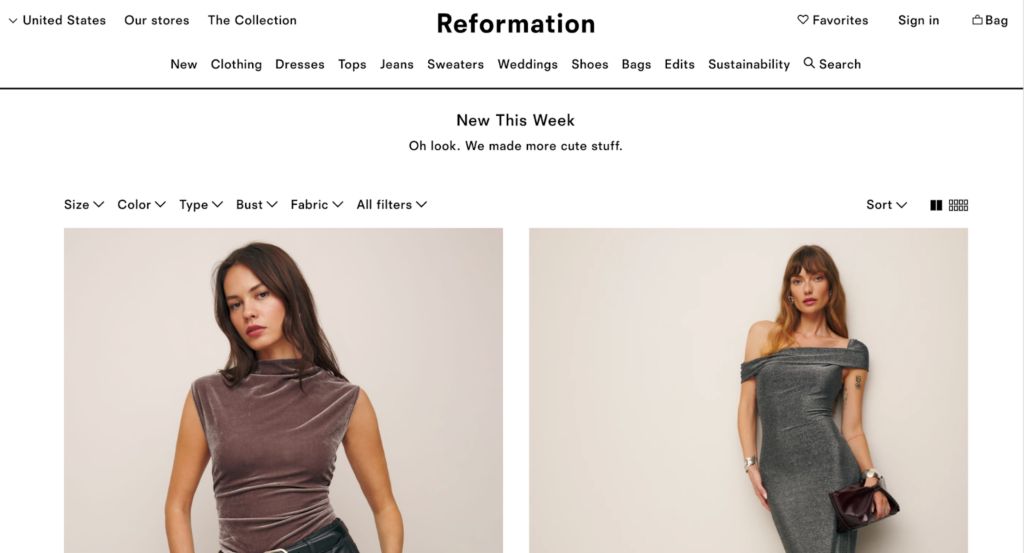
“We’re committed to pushing the industry forward and investing in future-focused solutions, which is why we’re a certified Climate Neutral company and will be Climate Positive by 2025.”
Reformation
🌎
How do they ensure their sustainability?
Reformation commits to better fabrics, aiming to trade all virgin materials for recycled, regenerative, or renewable ones by 2025. Their most preferred fabrics include recycled cotton, regenerative cotton, TENCEL™ lyocell, TENCEL™ x REFIBRA™, and deadstock, accounting for 32% of all their clothes. Particularly, their sequin collection is made with deadstock fabrics, lowering the impact of using this fossil-based material. They commit to becoming circular by 2030 by designing out waste at every stage of production, turning any occurring production waste into new products, and using renewable and regenerative practices for necessary virgin materials. Furthermore, their RefRecycling incentive enables customers to sell their preloved Reformation clothes for store credits. Such items will be broken down into fibers and turned into new products. Reformation also connects their suppliers with environmental solutions such as renewable energy, water-saving technologies, energy reduction solutions, chemical input optimization, and wastewater management. Last but not least, they openly share the carbon and water footprint of each product they make, fostering transparency and accountability in the fashion industry. Reformation is Bluesign® and Climate Neutral certified.
🌐
How do they ensure their ethics?
Reformation is fully transparent about where their clothes are made and the practices in such factories. Their Supplier Code of Conduct is based on International Labor Organization (ILO) standards. Their factory list shares many details about their factories, including whether a union and a collective bargaining agreement are present and the last audit. They have aligned with the Transparency Pledge and are participating in the Open Supply Hub to expand on the details that are made public so they can be more accountable for the working conditions in their partner factories. They give workers at their vendors a voice to bring up problems regarding their working conditions, level of happiness, working hours, and wages, and collaborate with vendors to ensure necessary improvements. Reformation is also a member of the Fair Labor Association, an initiative committed to promoting fair labor standards worldwide.
🤝
Are they part of any giving-back programs?
Reformation is not known to be part of any giving-back programs.
🛍️
What is their product range?
- Best for: womenswear
- Product range: dresses, tops, bodysuits, denim, cardigans, sweaters, wedding dresses, shoes
- Price range: $$$
- Size range: XS–XL
ASKET: Timeless Clothes Made Under Full Transparency and With Life-Cycle Responsibility
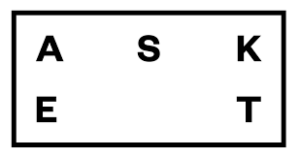

“Our mission is to end overconsumption and restore value to the clothing industry.”
Jakob Dworsky, founder of ASKET
🌎
How do they ensure their sustainability?
ASKET ensures sustainability by reducing waste and using less energy throughout the life-cycle of their garments. They tackle the textile waste problem with their Repair Program which helps keep clothes last longer and their Revival Program which diverts used garments from landfills to be repaired, renewed, resold, or recycled. On top of that, they use various recycled fabrics, including recycled wool, recycled cotton, recycled silk, recycled polyester, and recycled nylon. Specifically, their sequin clothes are made with recycled polyester, lowering the impact of using this material. ASKET also runs a Care Program, helping consumers keep their garments fresh longer while using less energy, lowering the environmental impact of the usage stage. In an effort to encourage consumers to buy and waste less, they are fully transparent about the environmental impact of their clothes.
🌐
How do they ensure their ethics?
ASKET maintains ethics through fair labor practices, responsible sourcing, and a commitment to transparency in their supply chain. In 2022, their average traceability score across their entire collection was 96.0%. Regarding animal rights, they follow the Responsible Wool Standard, appropriately addressing sheep’s welfare and the land they graze on.
🤝
Are they part of any giving-back programs?
ASKET is not known to be part of any giving-back programs.
🛍️
What is their product range?
- Best for: high-quality, essential, versatile wardrobe pieces
- Product range: tops, sweaters, pants, chinos, jackets, coats, socks, underwear
- Price range: $$$
- Size range: XS–XXL
Stella McCartney: Luxurious Fashion Clothes Made Ethically and Sustainably
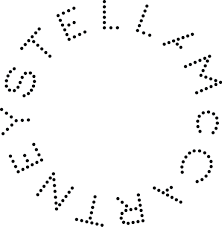
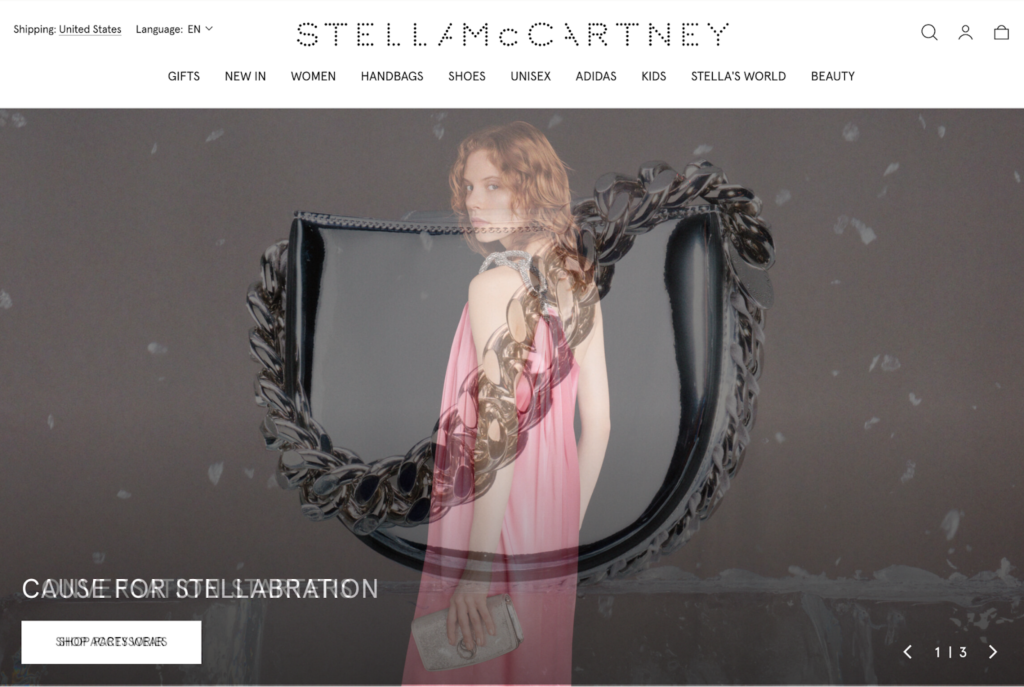
“We are committed to being an ethical, modern and honest company without compromising on luxury or quality.”
Stella McCartney
🌎
How do they ensure their sustainability?
Stella McCartney ensures sustainability by making use of the most cutting-edge and progressive materials that aim to reduce the impact on the planet and are always cruelty-free while following the principles of circularity. They use a medium proportion of eco-friendly and innovative materials, including GOTS-certified organic cotton, cashmere from 100% recycled waste Re.Verso™, and low-impact plant-based alternative materials (BananaTex®, VEGEA, Mylo™, MIRUM®). Regarding sequin fabrics, Stella McCartney made the world’s first garments using non-toxic, biodegradable, and low-carbon bio-sequins, aiming to eliminate plastic-based and metal-based sequins and their many adverse environmental impacts. Further down the life-cycle, Stella McCartney employs technological advances to trace their products, lower their manufacturing impact, and increase their circularity. Additionally, they exclusively use paper that is either FSC-certified or made from at least 50% recycled content in their packaging. In 2014, the brand launched Clevercare—a garment labeling system covering five simple areas of clothing care: washing, temperature, drying, ironing, and dry cleaning to help extend the life of garments, decrease the number of pieces that end up in landfill, and reduce life-cycle environmental footprint.
🌐
How do they ensure their ethics?
Stella McCartney commits to transparency across supply chains through diligent reporting, measuring, and tracking. Stella McCartney is a member of the Ethical Trading Initiative (ETI), a human rights organization driving force in ethical trade. They also trace most of their supply chain. Additionally, Stella McCartney uses lambswool and sheep wool certified with Responsible Wool Standard, appropriately addressing the welfare of sheep (and their calves) and the land they graze on.
🤝
Are they part of any giving-back programs?
Stella McCartney partners with and supports many charities, including but not limited to BioPlanet, Million Trees Miami, Naked Heart Foundation, Meat Free Monday, and Sea Shepherd.
🛍️
What is their product range?
- Best for: womenswear, menswear, kidswear
- Product range: shirts, skirts, denim, sweaters, swimwear, dresses, pants, jackets, blazers, hoodies, knitwear, tops, blouses, T-shirts, underwear, socks, shorts, jumpsuits, playsuits, shoes, accessories, plus-size
- Price range: $$$
Eileen Fisher: Secondhand Sequin Clothes From a Sustainable Fashion Brand
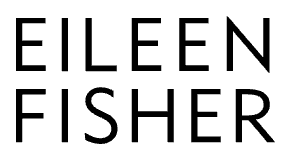
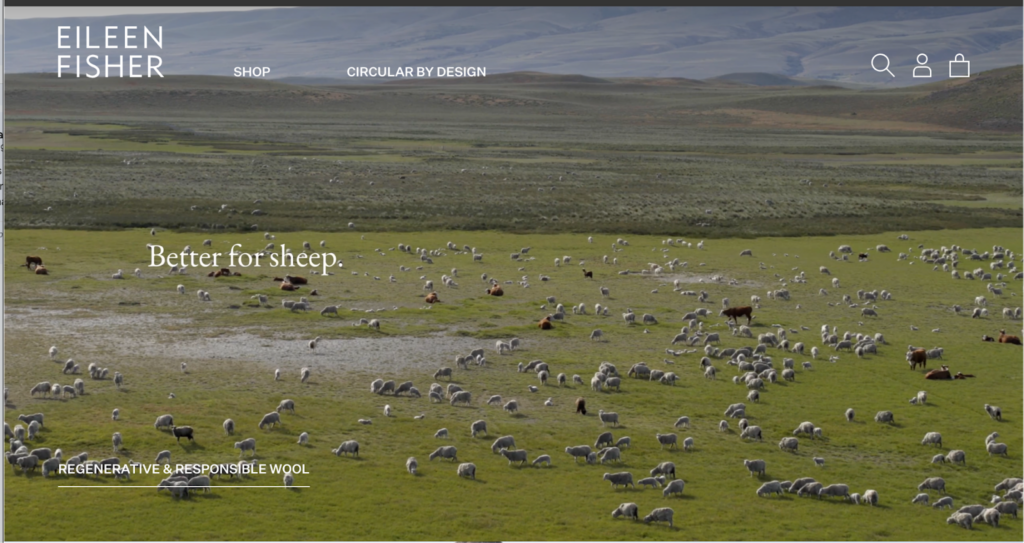
“The Biggest Thing We Can Do Is Reduce”
Eileen Fisher, founder of Eileen Fisher
🌎
How do they ensure their sustainability?
Eileen Fisher’s sustainability efforts focus on using eco-friendly materials, including recycled cotton, organic cotton, organic linen, and hemp, reducing greenhouse gas emissions generated from their operations and supply chain, reducing fabric and corporate waste, and recycling the brand’s used clothes back into new products. Their commitments to sustainable materials, circular systems, and environmentally friendly practices are demonstrated in initiatives like VISION 2020, Horizon 2030, and Renew. Specifically, you will be able to find many pre-loved sequin clothes via their take-back and resale program “Eileen Fisher Renew”. They are also certified as a B Corporation and a Bluesign® brand.
🌐
How do they ensure their ethics?
Eileen Fisher is committed to ethical practices. They have worker empowerment initiatives such as collective bargaining and the right to make a complaint. For example, their “Our Love, Peru” project supports over 450 families in and around Arequipa with higher fair trade wages and investments in the local community. Additionally, Their VISION 2020, set in 2015, tackled unethical labor practices. They also have a formal animal welfare policy aligned with Five Freedoms. Additionally, Eileen Fisher follows the Responsible Wool Standard and the Responsible Down Standard, which ensures the humane treatment of animals used for textile products.
🤝
Are they part of any giving-back programs?
Eileen Fisher supports many women-owned businesses. The brand has provided, since their inception, many grants for women, including the current program Supporting Women in Environmental Justice.
🛍️
What is their product range?
- Best for: elegant, classic, and casual women’s clothes
- Product range: dresses, blouses, sweaters, cardigans, pants, skirts and outerwear, shoes, accessories
- Price range: $$$
- Size range: XXS–3XL
Aspiga: Contemporary and Stylish Clothing Made With Plant-Based or Recycled Fabrics


“Sustainability has been woven into our DNA since day one. We recognise that sustainability is a process across all levels of our business, not a destination.”
Lucy Macnamara, Founder of Aspiga
🌎
How do they ensure their sustainability?
Aspiga ensures sustainability by sourcing low-impact textile materials, eliminating all plastic from their packaging, and extending their product lifespans through services that repair and re-circulate clothes. Regarding textile materials, they prioritize the most sustainable varieties of natural fabrics, plant-based semi-natural fabrics, and synthetic fabrics. For example, their sustainable sequin collection is made with recycled sequins instead of virgin plastics. Additionally, 96% of all the cotton used in Aspiga’s collection is responsibly sourced or GOTS-certified. Their plant-based viscose and lyocell of choice are made in closed-loop systems by Lenzing, using FSC-certified wood pulp. Regarding packaging, they have replaced all plastic with more sustainable options since 2019. Furthermore, Aspiga strives toward circularity by partnering with The Cirkel, a resale platform supporting shopping and selling pre-loved clothes and offering their Repair and Rewear Service to extend the life of your Aspiga clothing. Lastly, Aspiga has partnered with Future Leap to understand their carbon footprint and develop a roadmap to being carbon neutral by 2025.
🌐
How do they ensure their ethics?
Aspiga ensures their ethics by being transparent about the makers of their clothes. Specifically, all of their Indian suppliers are Sedex Certified (Supplier Ethical Data Exchange) or SA800 Certified, ensuring that ethical business practices concerning labor standards, health and safety, the environment, and business ethics are maintained. Additionally, they hold 100% of their garment manufacturer and subcontractors to their Code of Conduct.
🤝
Are they part of any giving-back programs?
Since their inception, Aspiga has chosen to support incentives where they can make positive change, such as providing clean water, facilitating education, and supporting refugees. For example, they donate £1–2 ($1.30–2.60) for each item that hasn’t yet been made with responsibly sourced or organic cotton to WaterHarvest, an India-based water charity. Some other organizations supported by Aspiga include WWF, British Asian Trust, Black Lives Matter, Love Not Landfill, and Days for Girls. Additionally, they carry out monthly beach cleans.
🛍️
What is their product range?
- Best for: menswear, womenswear
- Product range: shirts, swimwear, dresses, pants, T-shirts, jumpsuits, loungewear, skirts, shorts, coats, jackets, blouses, tops, sandals, accessories
- Price range: $$$
- Size range: XS–XXL
Albaray: Thoughtfully Designed and Responsibly Made Clothes


“We design with purpose and believe that sustainable fashion doesn’t have to compromise on quality – or cost the earth.”
Albaray
🌎
How do they ensure their sustainability?
Albaray prioritizes sustainability by sourcing a high proportion of eco-friendly materials. They use natural fabrics, including organic cotton, linen, and responsibly sourced cotton. Albaray also sources sustainable rayon fabrics, including TENCEL™x REFIBRA™ and ECOVEROTM viscose. Additionally, they recirculate waste by using deadstock and recycled fabrics. For example, their sequin clothing items are made with recycled polyester coins. Regarding packing, Albaray uses responsibly sourced FSC-certified paper. Their hang tags and labels are recycled and recyclable, while their returns are paperless.
🌐
How do they ensure their ethics?
Albaray traces most of their supply chain and audits some of their suppliers. They bind their suppliers with a Code of Conduct, covering all of the ILO’s Fundamental Principles and Rights at Work.
🤝
Are they part of any giving-back programs?
Albaray is an all-women-owned brand that supports women. For example, during 2022’s Black Friday period, they donated £5 ($6.40) of every order to The Prince’s Trust to support the #ChangeAGirlsLife campaign, supporting young women in the UK facing enormous challenges to have a brighter future. In September and October of the same year, they donated 25% of all Wide-Leg Jeans to SmartWork to raise essential funds and awareness to empower more unemployed women to enter the workforce.
🛍️
What is their product range?
- Best for: womenswear
- Product range: dresses, knitwear, skirts, shorts, pants, coats, jackets, blouses, tops, denim, swimwear
- Price range: $$
- Size range: S–XXL
Needle & Thread: Sneakers of Luxury Quality Built With Sustainable Materials


“I’ve never designed with one woman in mind; instead I like to create timeless pieces for real women all over the world. From the very beginning, I always wanted to make women feel beautiful.”
Hannah Coffin, Founder of Needle & Thread
🌎
How do they ensure their sustainability?
Needle & Thread ensures sustainability by sourcing a medium proportion of low-impact materials. These include natural fabrics (non-mulesed wool and GOTS-certified organic cotton) and recycled materials for both the fabric and the embellishment. Specifically, 90% of their sequins are made from recycled plastic using self-generated waste and certified by the Global Recycle Standard (GRS). Additionally, Needle & Thread’s synthetic materials come from GRS and RCS-certified sources. Currently, at least 75% of their fabrics are responsibly sourced. Regarding packaging, they have eliminated all virgin plastics from their supplier shipping packaging and use polybags made from 100% post-consumer waste.
🌎
How do they ensure their sustainability?
Needle & Thread binds their suppliers with a Code of Conduct, covering all of the ILO’s Fundamental Principles and Rights at Work. They trace part of their supply chain, including the final production stage. Additionally, they manage their manufacturing partners directly and very closely, having a regular presence and a strong working relationship with their suppliers. They also require their factories to undergo an independent audit every two years.
🤝
Are they part of any giving-back programs?
Needle & Thread forms meaningful partnerships with various charities, including The Prince’s Trust, Save the Children, Women for Women International, and World Land Trust. Additionally, their recent collaboration with Bobbi Brown resulted in around $250,000 raised for the charity Smart Works. Needle & Thread also gives back through community work like canal and beach clean-ups.
🛍️
What is their product range?
- Best for: womenswear, kidswear
- Product range: dresses, knitwear, knitted dresses, wedding dresses, party dresses, skirts, capes
- Price range: $$$$
- Size range: XXS–3XL
Sequin Fabrics: Durable Materials For Heavy-Used Clothing Items
Sequin fabrics are embellished with shiny and colorful fabric decorative ornaments called sequins. Both the fabrics and the sequins can be made from various materials, leading to varied levels of sustainability.
Here are the life-cycle stages of sequin fabrics and each stage’s sustainability assessment:
- Sourcing for sequin fabrics: Sourcing fossil-based plastics—the common raw materials for today’s sequin fabrics—is unsustainable. It leads to the depletion of nonrenewable resources, the acceleration of climate change, and environmental pollution. However, the sourcing stage of sequin fabrics can be sustainable when raw materials are recycled from waste, such as discarded PET bottles, and/or if they come from organically cultivated fiber crops like cotton.
- Manufacturing of sequin fabrics: Manufacturing sequin fabrics is generally unsustainable. The manufacturing process of sequin fabrics using fossil-derived feedstocks is generally energy-intensive and high-polluting. High energy demand can have serious knock-on ecological impacts when fossil fuels are the main energy sources at manufacturing locations.
- Transportation of organic sequin fabrics: Transporting sequin fabrics is generally unsustainable. It can be a carbon-intensive life-cycle stage for clothing items made with sequin fibers due to the distances covered and emissions associated with transporting vehicles. Fossil-based plastic sequin fabrics typically travel from mines where fossil fuels are extracted to various processing factories, sorting centers, shops, and consumers’ homes before going to recycling centers or landfills.
- Usage of sequin fabrics: Using plastic-based sequin fabrics is generally unsustainable. Washing plastic-based clothing items contributes to the increasingly serious problem of microplastic presence in marine environments. Sequin clothes are often treated as an outfit for special occasions, leading to them being underused before being discarded, which intensifies plastic waste problems.
- End-of-life of organic sequin fabrics: The end-of-life stage for plastic-based sequin fabrics is unsustainable because they are not biodegradable.
The sustainability of sequin fabrics depends largely on the materials used to make the sequins and the backing fabrics. The most sustainable sequin fabrics are made with recycled or bio-based, biodegradable sequins.
Why Is It Important to Buy Products Made of More Sustainable Fabrics
It is important to buy products made of more sustainable fabrics because a sustainable textile industry has a lower carbon footprint, helps save natural resources, and is ultimately better for forests, animals, and humans.
Buying Sustainable Fabrics Reduces Your Carbon Footprint
The production of clothing and footwear is estimated to contribute 10% of global greenhouse gas emissions—more than all international flights and shipping combined. If the fashion industry were a country, it would be the fourth largest emitter of carbon dioxide.
One way to reduce the carbon footprint of the clothes you buy is to opt for sustainable fabrics. Sustainable fabrics, which are often made with natural or recycled fibers, have relatively low carbon footprints compared to petroleum-based fabrics. For example, organic cotton made in the US has a carbon footprint of 2.35 kg CO2 (per ton of spun fiber)—a quarter of polyester’s carbon footprint.
Buying Sustainable Fabrics Reduces Demand For Natural Resources and Waste Management
The textile industry uses water and land to grow cotton and other fibers. It is estimated that 79 billion cubic meters of water were used for the sector worldwide in 2015. For example, producing a single cotton t-shirt requires as much water as one person drinks for 2.5 years (2,700 liters of fresh water).
Worse yet, the textile economy is vastly more linear than circular: the largest amount of resources used in clothes ended up in landfills (instead of being recycled to remake clothes). According to a report by the Ellen MacArthur Foundation,
- Less than 3% of materials used in the textile economy in 2015 came from recycled sources.
- In other words, more than 97% of resources used in making clothes are newly extracted.
When clothing items are disposed of within a short period of time—under a year in the case of half of the fast fashion clothes—the natural systems that provide raw materials for fabrics don’t have enough time to recover and regenerate, which could lead to ecological breakdown.
Sustainable fabrics are made with less water and emissions while lasting longer:
- Because they are durable, you don’t need to buy new clothes too often.
- Thus, you help reduce the pressure to extract more resources for making new items.
Similarly, making and consuming sustainable fabrics made with recycled materials reduces the demand for virgin materials while helping tackle waste management.
Buying Sustainable Fabrics Encourages Sustainable Management of Forests
Sustainable plant-based fabrics are made with raw materials from forests and plantations that are sustainably managed, such as complying with FSC standards.
When you buy sustainable plant-based fabrics, you discourage unsustainable forestry practices like illegal logging. You also help reduce deforestation, biodiversity loss, and the effects of climate change.
Buying Sustainable Fabrics Encourages Fairer Treatment of Animals
The fashion industry is rife with animal mistreatment when it comes to making animal-based fabrics like wool or silk. Every year, billions of animals suffer and die for clothing and accessories.
Buying sustainable vegan alternatives can help to reduce the pressure on raising more and more animals to meet the demand for animal-based fabrics while sacrificing their well-being and lives.
Suppose you have to buy fabrics made with, for example, wool or silk; make sure you only choose brands committed to cruelty-free products. In that case, you help advocate better treatments for animals raised within the textile industry.
Using Sustainable Fabrics Encourages Fairer Treatment of Textile Workers
Recent statistics from UNICEF estimated as many as 170 million child laborers worldwide, many of whom were engaged in some form of work in the textile industry. They don’t get paid minimum wages and often work long hours.
When you buy sustainable fabrics from brands transparent about the working conditions at their factories, you discourage the use of child labor and help promote better working conditions for textile workers.
How Can You Generally Buy More Sustainable Fabrics
The key to sustainably buying fabrics is to check on relevant environmental and original certifications.
For natural fabrics:
- Global Organic Textile Standard (GOTS): A globally recognized certification system that ensures a certain threshold of organic content has been met. It covers manufacturing, packaging, labeling, transportation, and distribution (but not what happens in the fields where crops are grown).
- USDA Certified Biobased Product: The USDA BioPreferred® Certification is a voluntary certification offered by the United States Department of Agriculture. The certification identifies products made from plants or other renewable materials.
- Ecolabel: Ecolabel is the official European Union voluntary label recognized worldwide for certified products with a guaranteed, independently verified low environmental impact. The label requires high environmental standards throughout the entire life-cycle: from raw material extraction through production and distribution to disposal. It also encourages companies to develop innovative, durable, easy-to-repair, and recyclable products.
For plant-based semi-natural/semi-synthetic fabrics:
- Forest Stewardship Council: An FSC certification ensures that the wood (or wood-like material) comes from responsibly managed forests that provide environmental, social, and economic benefits.
There are two types of FSC Certification:- FSC Forest Management Certification, with a focus on the origin of the wood—the forest.
- FSC Chain of Custody Certification, which focuses on the path from the forest to the customer’s home.
- Program for Endorsement of Forest Certification: PEFC’s approaches to sustainable forest management are in line with protecting the forests globally and locally and making the certificate work for everyone. Getting a PEFC certification is strict enough to ensure the sustainable management of a forest is socially just, ecologically sound, and economically viable but attainable not only by big but small forest owners.
For recycled fabrics:
- Recycled Claim Standard (RCS): The Textile Exchange RCS was originally developed as an international, voluntary standard that sets requirements for third-party certification of Recycled input and chain of custody.
- The Global Recycled Standard (GRS): The Global Recycled Standard (GRS) is an international, voluntary, full product standard that sets requirements for third-party certification of Recycled Content, chain of custody, social and environmental practices, and chemical restrictions. It can be used for any product with more than 20% recycled material.
For all types of fabrics:
- STeP by OEKO-TEX®: STeP by OEKO-TEX® is an independent certification system for brands, retailers, and manufacturers from the textile and leather industry. It communicates organizational environmental measures, including reducing carbon footprint and water usage.
- OEKO-TEX® Standard 100: OEKO-TEX® labels aim to ensure that products pose no risk to human health (i.e., containing banned chemicals).
Some certifications that are signaling brands’ efforts toward lowered environmental impacts and a circular economy are:
- B Corp Certification: The label B Corp is a certification reserved for for-profit companies. Certified holders are assessed on their social and environmental impacts.
- Cradle2Cradle certification: Cradle2Cradle provides a standardized approach to material circularity. It assesses whether products have been suitably designed and made with the circular economy in mind covering five critical categories: material health, material reuse, renewable energy and carbon management, water stewardship, and social fairness.
Final Thoughts
Sequin fabrics are generally unsustainable as they are commonly made with fossil-based plastics. Fossil-based plastic production is energy-intensive and high-polluting. Washing clothes made with plastic materials contributes to microplastic problems in marine environments. Also, conventional fossil-based plastics aren’t biodegradable.
By purchasing new or pre-loved sequin clothing items from brands that commit to recycling and sustainability, you support their mission to create a fairer and less harmful textile industry for all lives on Earth.
Here is the list (again) of the most sustainable sequin clothing brands:
- Reformation
- ASKET
- Stella McCartney
- Eileen Fisher
- Aspiga
- Albaray
- Needle & Thread
To make your use of these fabrics even more sustainable, follow these steps:
- Buy second-hand, recycled, or upcycled clothes made with sequin clothes.
- While using sequin clothes, maximize the number of wears between washes and keep them as long as possible.
- At the end-of-life of your sequin clothes, upcycle the materials to extend their usage and arrange for them to be recycled or properly disposed of.
Stay impactful,

Sources
- Impactful Ninja: How Sustainable Are Sequin Fabrics? A Life-Cycle Analysis
- Science Direct: Life-cycle assessment (LCA)
- Reformation: Home
- ASKET: Home
- Stella McCartney: Home
- Eileen Fisher: Home
- Aspiga: Home
- Albaray: Home
- Needle & Thread: Home
- Reformation: Sustainability
- Impactful Ninja: How Sustainable Are Recycled Cotton Fabrics? A Life-Cycle Analysis
- Impactful Ninja: How Sustainable Are TENCEL™ Fabrics? A Life-Cycle Analysis
- Lenzing: TENCEL™x REFIBRA™
- Reformation: Sequin collection
- Reformation: Circularity
- Reformation: RefRecycling
- Reformation: What is RefScale
- CLIMATE NEUTRAL: Reformation
- The Reformation: Supplier Code of Conduct
- International Labor Organization (ILO): Home
- Reformation: Supplier Code of Conduct
- Reformation: Factories
- Transparency Pledge: Home
- Open Supply Hub: Home
- Fair Labor Association: Home
- ASKET: The Repair Program
- ASKET: The Revival Program
- Impactful Ninja: How Sustainable Are Recycled Fabrics? A Life-Cycle Analysis
- ASKET: Materials | Recycled Wool
- Impactful Ninja: How Sustainable Are Recycled Polyester? A Life-Cycle Analysis
- ASKET: Materials | Recycled Synthetics
- ASKET: The Care Program
- ASKET: Full Transparency
- ASKET: TRACKING HOW WE FOLLOW OUR PRINCIPLES
- Stella McCartney: Sustainability
- Stella McCartney: Circularity
- Good On You: Brand Directory | Stella McCartney
- Global Organic Textile Standard (GOTS): Home
- Stella McCartney: Organic cotton
- Stella McCartney: Recycled cashmere
- Stella McCartney: BananaTex®
- Stella McCartney: VEGEA
- Stella McCartney: Mylo™
- Stella McCartney: MIRUM®
- Stella McCartney: Sustainable sparkle by Radiant Matter, the innovators of BioSequin
- Stella McCartney: Traceability and Blockchain Technology
- Stella McCartney: Metals
- Stella McCartney: Spotlight on Airslide
- Stella McCartney: Paper and Packaging
- Stella McCartney: Clevercare
- Stella McCartney: Measuring our impact
- Ethical Trading Initiative: Home
- Stella McCartney: Charities
- Million Trees Miami: Home
- Naked Heart Foundation: Home
- Meat Free Monday: Home
- Sea Shepherd: Home
- Impactful Ninja: How Sustainable Are Organic Cotton Fabrics? A Life-Cycle Analysis
- Impactful Ninja: How Sustainable Are Organic Linen Fabrics? A Life-Cycle Analysis
- Impactful Ninja: How Sustainable Are Hemp Fabrics? A Life-Cycle Analysis
- Eileen Fisher RENEW: Home
- Eileen Fisher RENEW: Sequin
- Eileen Fisher: OUR VISION2020 RESULTS
- Eileen Fisher: Our Brand
- B Corporation: Eileen Fisher
- Good On You: Brand Directory | Eileen Fisher
- Eileen Fisher: Community | Love, Peru. Our Fair Trade Project.
- CFDA: HOW EILEEN FISHER IS THE ULTIMATE SUSTAINABLE LABEL
- Seek Capital: 11 Small Business Grants For Women
- B Corporation: Aspiga
- Aspiga: Repair and Rewear Service
- Impactful Ninja: How Sustainable Are Natural Fabrics? A Life-Cycle Analysis
- Impactful Ninja: How Sustainable Are Semi-Natural/ Semi-Synthetic Fabrics? A Life-Cycle Analysis
- Impactful Ninja: How Sustainable Are Synthetic Fabrics? A Life-Cycle Analysis
- Aspiga: Sustainable sequin
- Aspiga: Our Materials
- Impactful Ninja: How Sustainable Are Viscose Fabrics? A Life-Cycle Analysis
- Impactful Ninja: How Sustainable Are Lyocell Fabrics? A Life-Cycle Analysis
- Aspiga: Our impact
- Aspiga: Resale
- Aspiga: ASPIGA Fashion Made Fair | 2022-2023 IMPACT REPORT
- Future Leap: Home
- Aspiga: Meet The Makers
- Sedex: Home
- Social Accountability International: SA8000 Standard
- Aspiga: Charitable incentives
- WaterHarvest: Home
- Love Not Landfill: Home
- Days For Girls: Home
- Good On You: Brand Directory | Albaray
- Impactful Ninja: How Sustainable Are Linen Fabrics? A Life-Cycle Analysis
- Impactful Ninja: How Sustainable Are Cotton Fabrics? A Life-Cycle Analysis
- Impactful Ninja: How Sustainable Are Rayon Fabrics? A Life-Cycle Analysis
- Lenzing: ECOVEROTM
- Albaray: Sequin
- Albaray: Code of Conduct
- International Labour Organization: ILO’s Declaration on Fundamental Principles and Rights at Work.
- Albaray: We’re donating £5 to WOMEN SUPPORTING WOMEN from every order this Black Friday weekend
- The Prince’s Trust: Home
- Change A Girl Life: Home
- LinkedIN: Albaray
- Albaray: Dark Wash Full Length Wide-Leg Jeans
- SmartWork: Home
- Positive Luxury: Home
- Good On You: Brand Directory | Needle & Thread
- Needle & Thread: Responsibly Sourced Fabrication
- Textile Exchange: Global Recycle Standard
- Needle & Thread: Positive Luxury
- Needle & Thread: Code of Conduct
- Needle & Thread: Social Responsibility
- World Land Trust: Home
- Needle & Thread: Our Story
- European Parliament: The impact of textile production and waste on the environment (infographic)
- Science Direct: The challenge of “Depeche Mode” in the fashion industry – Does the industry have the capacity to become sustainable through circular economic principles, a scoping review
- Science Direct: Carbon Footprint of Textile and Clothing Products
- European Parliament: Environmental impact of the textile and clothing industry
- European Parliament: What if fashion were good for the planet?
- Ellen MacArthur Foundation: A New Textiles Economy: Redesigning fashion’s future
- McKinsey: Style that’s sustainable: A new fast-fashion formula
- Forest Stewardship Council: Home
- Our World in Data: Deforestation and Forest Loss
- Our World in Data: Renewable Energy
- Peta: Animals Used For Clothing
- The Guardian: Child labour in the fashion supply chain
- BioPreferred: WHAT IS THE BIOPREFERRED PROGRAM?
- European Commission: Environment | EU Ecolabel
- FSC Forest Management Certification
- FSC Chain of Custody Certification
- Program for Endorsement of Forest Certification
- Textile Exchange: The RCS and GRS are designed to boost the use of recycled materials.
- OEKO-TEX: Certification according to STeP by OEKO-TEX®
- B Corp Certification: Home
- C2CCertified: Home




